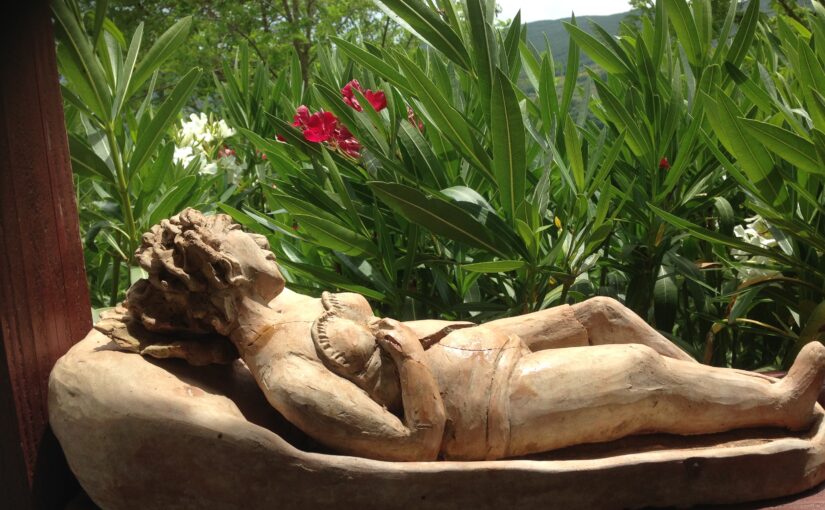Tuesday, July 11
Cynthia spent three or more hours daily working mostly with yin tui na and qigong techniques. The week following, that of July 3, was filled with improvements, both subtle and obvious. All of these lightenings of symptoms have happened before for a day or two, but here is a list of changes that held for five days or more.
Movement: It is easier to initiate movement, most notably with my feet. That also means no freezing in place and not halting before I change direction. Although the ease has diminished since Sunday, this is still the case after more than a week.
Restless Leg Syndrome: Incidents of RLS are both less frequent and less severe. This also survived the week.
Walking: Until Saturday there were periods of “strong” walking that felt more grounded and fluid. On occasion my arms relaxed and swung a little. This is gone, for the present.
Drool: There has been a persistent reduction of saliva, especially at night. Continues thus.
Sleep and Comfort in Bed: There is a major improvement in quality and duration of sleep, plus greater ease in finding comfortable positions, and in turning over and making physical adjustments. Turning over became difficult again on Monday night, though less so than what was previously normal.
Internal Factors: I am more forgiving of myself, kinder in my thoughts, and gentler in recalling memories, and I am grateful for joy when it appears.
I dearly wish I could live within walking distance of Cynthia for a few weeks, or find someone as generous, kind, and informed as she to continue treatment. When I can type more easily I intend to write more about what we encountered during our afternoon sessions, and of ways I am trying to continue with those practices on my own.
[the following quote is from Recovering from Parkinson’s by Janice Hadlock]
“Only if you understand what it is you are truly trying to change will you be able to rest easy in the knowledge that you are, in fact, healing from Parkinson’s disease after pause turns off. Your doctors and loved ones might assume you still have Parkinson’s disease until their snappy and highly inadequate visual assessment shows that you no longer have any residual trace of impaired motor function.
Doubt can cause people to re-invoke self-induced pause. Don’t.
You know the changes and healing you are going through even if no one else perceives them or acknowledges them. Savor them.”



